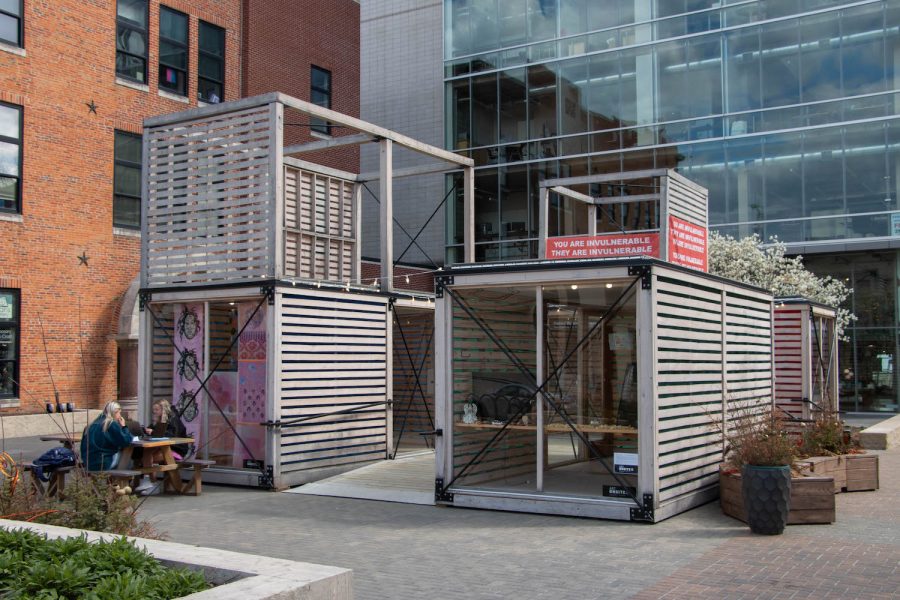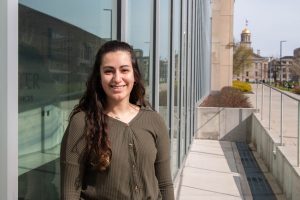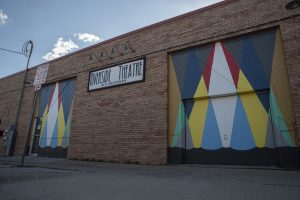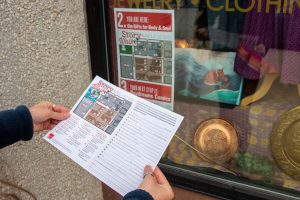‘Art Onsite’ turns vacant storefronts into spaces for art
Public Space One has launched a new initiative, Art Onsite, that will take underutilized building windows and pop-up shops in downtown Iowa City as spaces to highlight local artwork.
An art installation by Art Onsite is seen in the Pedestrian Mall near Washington St. on Sunday, April 18. (Kate Heston/The Daily Iowan)
April 20, 2021
Public Space One is expanding art beyond traditional galleries to downtown Iowa City. In its new initiative, Art Onsite, the organization will take underused storefronts and vacant windows in Iowa City to showcase the work of local artists.
Public Space One Director John Engelbrecht said the idea of Art Onsite coalesced around a collaboration between Public Space One and the Iowa City Downtown District. Iowa City had funding and underused windows, he said, and Public Space One had an abundance of artists ready to have their work be seen by the public.
“Part of it is putting local artists in a place where local people will see them and kind of realize there’s a lot of creative people around,” Engelbrecht said. “I think people think of Iowa City as a creative place for writing and culture and that sort of thing, but sometimes the visual arts aren’t as visible. And this was just a way to kind of expand that from the gallery into the fabric of the city.”

Engelbrecht added that the project served as a pandemic-safe way for passersby to engage with local art.
While current exhibitions can be found in pop-up shops along the Ped Mall, the next installations will appear in storefronts like Raygun’s previous location, Daydreams Comics, McDonald Optical, and the Savings and Loan Building.
The project has received funding for a dozen artists until early summer, but Engelbrecht said Public Space One is treating this as a pilot period to what will hopefully become an ongoing project.
RELATED: A new online registry from the Iowa City Public Art Program aims to give local artists more exposure
Engelbrecht said he’s grateful for the excitement the project has generated.
“Our hope is that other people who own businesses or own buildings that are being underutilized will see the value in letting artists kind of transform their space, even if it’s only for, you know, a month or two weeks,” Engelbrecht said.
One of the artists with work on display is Gail Ray, a retired architect and the second woman to become registered as an architect in Iowa. Her exhibition, “Spring,” is a cutting-edge form of printmaking, featuring what Ray called “fun and funky faces,” layered with various patterns of bright pinks and purples.
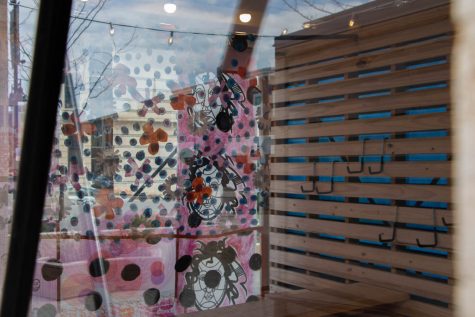
Ray spoke fondly of Iowa City, recalling her first job, the birth of her child, and the first home she built for herself. She said she tried to showcase work that fit the surrounding atmosphere.
“Iowa City is such a great city to people watch, and, you know, they [students] are just enjoying the springtime, and so that’s kind of what my artwork’s all about,” Ray said. “Those first few moments of spring, when you’re just so happy and appreciative of the sunshine and the warm weather, and people are out again, and life is returned to normal. And, in the year of coronavirus, that’s doubly important.”
RELATED: Iowa City looks for more public feedback on new mural
The next round of artists will be on display starting May 1. One such artist is India Johnson, whose work, “DEMAND / PRAYER,” contains 365 textile squares, spanning from March 8, 2020 to March 7, 2021, with the phrase “FROM PLAGUE DELIVER US” stamped on each square in correspondence to the number of new cases in Johnson County that day.
“I favor non-gallery spaces for exhibition because my work is highly tactile and material,” Johnson said. “People may feel less inhibited about touching the work or interacting with it outside of a gallery space. Also, I feel a productive contrast emerges between my work, which is finely crafted by hand, and the everyday surroundings in which it’s displayed. Why do we assume the gallery is the default habitat for art?”



